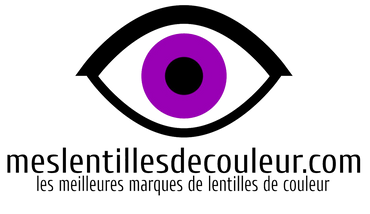
How to read your lens prescription?
My Contact Lens Prescription
When you receive a prescription for Contact lenses can seem a little confusing at first glance, with many technical terms and abbreviations. However, understanding this information is essential to ensure you wear the right ones. Contact Lenses and that your vision is properly corrected. In this article, we will decipher the elements of a prescription for Contact Lenses , explaining each parameter to allow you to choose your contact lenses carefully .
How to Read Your Lens Prescription: Power or Sphere (PWR / SPH)
There power , abbreviated to PWR (Power) or SPH (Sphere), is the first key element of your prescription. It indicates the degree of correction needed to correct your myopia or hyperopia.
- If the number is negative , you are myopic (you have difficulty seeing from a distance).
- If the number is positive , you are hyperopic (you have difficulty seeing up close).
This value is measured in diopters (D). The further the number is from zero, the stronger the vision correction.
- Example : A power of -3.00 means that you are nearsighted and your lenses correct your vision by 3 diopters.
How to Read Your Contact Lens Prescription: Base Curve (BC)
THE BC Or Base Curve is the base curvature of the Contact Lens , which determines how the Contact lens fits the surface of your eye. This figure is usually between 8.0 and 9.5 mm.
- Example : BC 8.6 means the lens has a curvature of 8.6 mm.
The curvature is adjusted according to the shape of your eye, and an incorrect adjustment could lead to discomfort or vision problems. This setting is particularly important to ensure that the Contact lens sits well and is comfortable on your eye.
How to Read Your Contact Lens Prescription: Diameter (DIA)
THE diameter of the Contact Lens , abbreviated to DIA , is the size of the Contact lens , measured in millimeters from edge to edge. This number is crucial for the lens to properly cover your cornea.
- Example : DIA 14.2 means that the lens has a diameter of 14.2 mm.
An improper diameter could cause excessive movement of the Contact lens on the eye or on the contrary a too tight fit, causing discomfort.
How to Read Your Contact Lens Prescription: Cylinder (CYL) and Axis (AXIS) for Astigmatism
If you have astigmatism , which is an irregularity in the shape of the cornea, your prescription will contain two additional parameters for Toric Lenses :
-
CYL (Cylinder) : This value indicates the additional power required to correct astigmatism. As with the sphere power, it can be positive or negative. The further the value is from zero, the greater the astigmatism correction.
-
AXIS (Axis) : The axis is measured in degrees (from 0 to 180°) and indicates the orientation of the astigmatism correction. This is the direction in which the cylinder must be positioned to correct astigmatism correctly.
-
Example : CYL -1.25 / AXIS 90 means that you have an astigmatism requiring a correction of -1.25 diopters, with the axis of the correction located at 90 degrees.
These two parameters are essential for those who wear toric lenses , which are specially designed to correct astigmatism.
How to Read Your Contact Lens Prescription: Addition (ADD) for Multifocal Lenses
If you are presbyopic (often from the age of 40), you may need Multifocal Lenses to correct both near and distance vision. In this case, the prescription will include a value called Addition Or ADD .
-
ADD is a positive value, which represents the power needed to correct near vision, in addition to the basic correction for distance vision.
-
Example : ADD +1.50 means that an additional power of 1.50 diopters is added to help you read or see up close.
How to Read Your Contact Lens Prescription: Right Eye (OD) and Left Eye (OS)
An order of Contact Lenses differentiates the two eyes with the terms OD (Oculus Dexter for right eye) and BONE (Oculus Sinister for left eye). Some people may have a different correction for each eye, and it is therefore important to correctly identify the lenses specific to each eye.
- OD : Right eye.
- BONE : Left eye.
Make sure you do not mix up the lenses, especially if the prescriptions are different for each eye, as this could affect your vision.
How to Read Your Contact Lens Prescription: Prescription Date and Renewal
Finally, the order will have a prescription date , which is important to know when you will need to see your eye doctor again for a new prescription. Contact Lens Prescriptions are usually valid for one year, and it is important to have your eyesight checked regularly to ensure that your Contact Lenses always match your visual needs.
Understanding the information on a prescription Contact Lenses is essential to ensure that you are using the right ones Contact Lenses tailored to your needs. Every parameter, from power to curvature to diameter and, in some cases, correction of astigmatism or presbyopia, plays a crucial role in the comfort and effectiveness of Contact Lenses . If you have any questions about your prescription, never hesitate to ask your ophthalmologist or optician for clarification.
